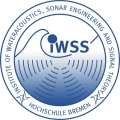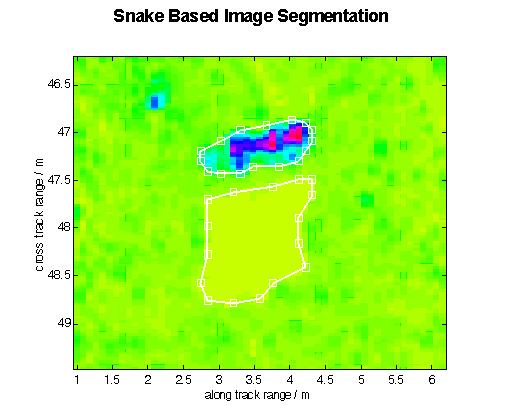Measurement Data Processing
The data processing of sensor group signals is playing a central rule in the area of
o passive localization, e.g. in passive sonar and interferometrical
radio-astronomy, in which the properties of the
propagation medium are assumed
to be known and the number, location and power of a signal source are to be
determined from the sensor group data,
o active localization, e.g. in radar and active sonar, in which a wave is generally
emitted in a directed manner, in
order to subsequently analyze its on an object reflected wave,
o exploration, e.g. in geophysics and medical engineering, in which
information about the propagation medium is
to be obtained from the sampled
wave field that is generated by signal sources with known properties,
The scope of research at the IWSS in the field of data processing is
summarized below.
Signalanalysis
o Detection Theory (CFAR, Transients)
o Parametrical and Non-Parametrical Spectral Analysis
o Time-Frequency-Analysis (Wavelets,
Wigner-Ville-Distribution)
o Optimum-Filter-Theory (Wiener- und
Kalman-Filter)
o Automatic Detection und Track-Initiation
o Multi-Sensor Track-Fusion
Sensor Group Signal Processing
The spatial filter effect
(resolution and ambiguity) of a sensor group
is determined by the number, position and directional characteristic of
the
sensors as well as by the signal frequencies of the waves. Since the
resolving power of a sensor group can not be arbitrarily
extended for constructive and physical reasons (finite coherence
length), approaches
which allow an increase of the radial and lateral resolution as new
signal forms (signals with high bandwidths), the formation of
synthetic sensor groups (synthetic aperture methods), and the
application
of more complex models (high-resolution methods) are subject of
research.
- Signals with high Bandwidth
To improve the radial resolution, high-bandwidth waveforms and large
time-bandwidth products are of particular interest. Approaches to this are
o bi- und polyphase coded signals
o frecuency hopping coded signals
o pseudo-random sequences
with pulse compression on the receiving side. The impulse compression is
realized by a matched filter or a mis- matched filter with predefined properties
- Synthetic Aperture Methods
Another possibility to enhance the lateral resolution gives the
synthetic aperture method. It can be distinguished between a synthetic aperture
principle in stripmap or spotlight mode, dependent on the transmission or
reception method used during the sensor movement. For the construction of a
synthetic aperture, a precise compensation of the deviations of the sensor
movement from the nominal path is necessary. Possible motion compensation
methods are:
o Inertial System Supported Path Estimators
o Micro Navigation Techniques
o Auto Focus Methods
- High Resolution Methods
In the case of high-resolution
methods, a distinction is made between parametric and nonparametric methods.
The class of parametric methods includes methods in which a predetermined
signal model is optimally adapted to the measured data by variation of the
model parameters of interest in terms of the maximum likelihood principle or
the least squares approach. The non-parametric methods, e.g. linear prediction
methods (maximum entropy), methods of the Capon-Pisarenko type and projection
methods (MUSIC, Minimum-Norm) use a priori known mathematical proper- ties of the
measured data to determine the desired parameters.
Digital Image Processing
o Image
Generation (Interpolation-
and Decimation Techniques, Geo Coding, On-Line 3D-Illustration
o Image Filtering and Normalization Methods, as well as Image Segmentation
and Image Fusion Techniques
o Tomography and Stereoscopy (resolution and SNR improvement)
o Interferometry and Shape from Shading Techniques
Automatic Classification Methods
o Feature Extraction Techniques
+ Sonar Signals (aktive/passive)
+ Sonar Images (edge detection, texture analysis, echo- und shadow classification)
o Automatic Classification
+ Statistical Methods, Decision Theory
+ Neuronal Networks, Fuzzy Logic
+ Knowledge based Systems
+ Deep Learning
Broadband Communication in the Water Sound Channel
o Special channel-matched Signal Structures (e.g. Signal structures of
dolphins, bionics)
o Robust Modulation
Methods in Multipath Propagation
o Adaptive Filters/Equalizers
as well as Adaptive Beamforming
o Simulation of Acoustic
Data Transmission Scenarios



